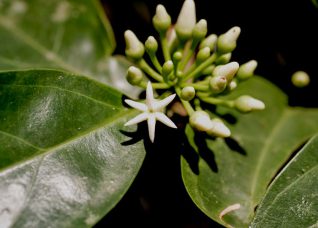
MinerAlert

MinerAlert
Ptychopetalum olacoides
Olacaceae
Potency wood, marapuama, miruatan

This small tree is native to the Amazonian region of South America (Quattrocchi, 2012; Mabberley, 2008).
The bark of the tree, roots, and leaves.
The root and bark of the tree are decocted in water and taken as a tea or applied externally as a poultice or wash. Capsules containing the pulverized root or bark are available commercially.
This tree has a plethora of uses among the indigenous peoples of the Amazon, including the following: adaptogen, alopecia (applied topically for hair loss), anorexia, antinociceptive, antioxidant, aphrodisiac, ataxia, beri beri (vitamin deficiency disease), debility, digestive problems, dysentery, fatigue, impotence, neurasthenia, nerve tonic, rheumatism, stimulant, tonic (adding bark decoction to a bath), paralysis, and tremors (Quattrocchi, 2012; Piato et al., 2010; Berdonces, 2009; Duke et al., 2009; Taylor, 2005; Rutter, 1990).
Muira puama is an important ingredient of “catuama”, a medicinal poly-herbal combination used in South America, also composed of guaraná (Paullinia cupana), ginger (Zingiber officinale), and Trichilia catigua (Quattrocchi, 2012).
One of the main active ingredients in muira puama is an alkaloid known as muirapuamine (Lorenzi and Matos, 2008).
Ferrini et al. (2015) assessed whether the daily oral administration, for a period of eight weeks, of a combination of ginger, guaraná, muira puama, and L-citrulline could effectively delay the ongoing corporal fibrosis, smooth muscle cell apoptosis (programmed cell death) and cavernosal veno-occlusive dysfunction present in middle aged rats similar to that seen with the prescription medication tadalafil. The results of the study showed that the orally delivered herbal combination plus L-citrulline appeared to be as effective as daily therapy with the medication in either slowing down or reversing the onset of the histological and functional characteristics of erectile dysfunction related to aging in laboratory rats.
A study assessed the in vitro antioxidant activities of plants from the Brazilian Amazon (Byrsonima japurensis, Calycophyllum spruceanum, Maytenus guyanensis, Passiflora nitida and muira puama Ptychopetalum olacoides. The results supported the traditional use for these plants against inflammation, due to their significant antioxidant (free radical scavenging) action (de Vargas et al., 2016).
Oliveira et al. (2013) conducted an in vitro study using the aqueous extracts of various traditional medicinal plants from Amazonia, searching for antimicrobial activity against both human as well as animal pathogenic microbes. The extracts obtained from muira puama and Pentaclethra macroloba inhibited the growth of the bacteria Klebsiella ozaenae and Acinetobacter baumannii.
Figueiró, et al. (2010, 2011) evaluated the effects of an ethanol extract obtained from muira puama and identified promnesic (improving memory), anti-amnesic, and acetyl-cholinesterase inhibition properties in laboratory animals (mice) treated orally with the extract. The results of the studies showed that this plant induces acetyl-cholinesterase inhibition in brain areas relevant to cognition. For this reason, the authors concluded that muira puama extracts could be a potential treatment for Alzheimer’s disease in humans.
A study undertaken with mice showed that an extract from muira puama had a stimulating (tonic) effect. This plant possesses antioxidant and neuroprotective properties as well as health benefits associated with stressful situations. For this reason, this plant could possess adaptogen-like characteristics and could be useful for the treatment of stress (Piato et al., 2010).
Safety/Precautions:
Before you decide to take any medicinal herb or herbal supplement, be sure to consult with your health care professional first. Avoid self-diagnosis and self-medication: Always be on the safe side!